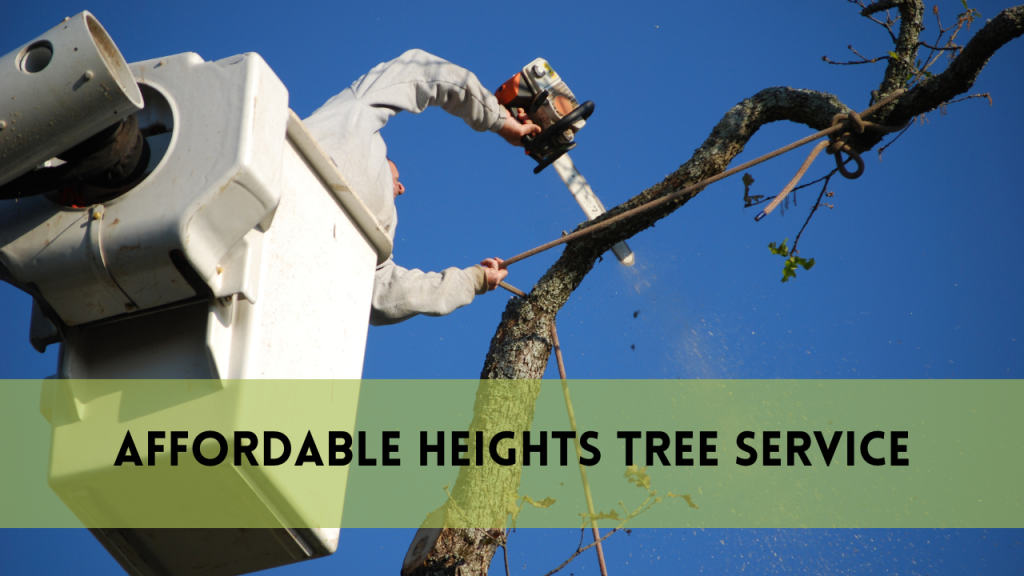Remove mistletoe from trees
When the holiday season rolls around, one of the most recognizable symbols is the sprig of mistletoe hanging overhead. Despite its association with the festive season, mistletoe can be harmful to the health of your trees. So, if you detect this parasite in your home, you should get rid of it as soon as possible. In this Blog You will Learn about how to remove mistletoe from trees.
So, what is mistletoe & how to remove mistletoe from trees
Mistletoe is a plant recognized for its typical appearance, which is often seen as a green sprig with white berries, particularly during the Christmas season. It is a parasitic plant, meaning it grows on the branches of other trees, typically hardwood trees such as oak, apple, and maple, as well as conifers such as pine and spruce.
How to know that your tree has mistletoe:
Mistletoe infestations can be identified by the emergence of green sprouts wrapped in a coil around the trunk and branches of your trees. In the United States, there are various varieties of mistletoe (this US Department of Agriculture paper will help you identify them), but they’re all quite easy to identify. Aside from growing on tree branches, they are distinguished by clusters of little white berries that are deadly to humans but a food source for many animals. Mistletoe grows on a variety of trees in Texas, including water oak, Spanish oak, elm, and hackberry. Keep an eye out if you have any of them on your property.
Mistletoe Is a Tree Killer
Mistletoe’s effects can be disastrous over time, causing branches to weaken and eventually die. Its roots dig past the bark, deep into the inner tissue, where they sap the strength of the tree, causing extensive damage if left unchecked. Mistletoe can kill entire trees if it spreads far enough and is combined with another stressor. That is why it is critical to remove mistletoe as soon as possible.
The impact of mistletoe on Host Trees
While mistletoe does not necessarily kill healthy trees, it can drastically weaken them. Here are some of the ways mistletoe can be harmful to its host:
Reduced Nutrient Absorption:
Mistletoe suckers critical nutrients from the host tree, depriving it of the resources it requires to survive.
Stunted development:
As a tree’s mistletoe population grows, the host tree’s development may be stunted, with branches becoming weaker and less able to hold foliage.
Mistletoe-infested
These trees are more vulnerable to other stressors such as pests, diseases, and harsh environmental conditions.
Branch Breakage:
Mistletoe clusters and their host branches add weight to trees, making them more prone to branch breakage, especially during storms.
In severe circumstances, mistletoe infestations left untreated for an extended length of time can lead to the death of the host tree.
Damage
Because mistletoe grows best on stressed and weakened trees, it’s no surprise that trees in cities and on lawns are frequently afflicted. Cities, suburbs, and other developed settings stress trees, making them vulnerable to mistletoe infection. Soil compaction, shallow soil, rocky soil, poor drainage, poor fertility, and even root damage from digging or trenching are all common pressures that trees face.
The growth of mistletoe in a new infection is gradual and has little effect on the tree. Later, usually, years later, the mistletoe grows to such a size that it takes so much from the tree that branches beyond the infection begin to die off due to a lack of water. The tree frequently reacts to mistletoe as if it were a disease or bug. In an attempt to control the problem, the tree seals up the damaged area of itself, resulting in more dead branches.
Control
Improving Tree Health
Creating the best, least stressful environment for tree growth—excellent, undisturbed soil with the right amounts of minerals, organic matter, and water—is the foundation of successful tree management.
Mulching helps maintain many of these ideal circumstances while cost-effectively enhancing the health of the trees. Apply mulch over as much of the land as you can in a 3-inch layer. A good place to start is by completely mulching the space underneath the tree’s drip line. Don’t pile mulch against the trunk as that would encourage other problems.
Pruning is the Most Effective Way to Control Mistletoe
Mistletoe is a parasite, it will die if you cut the branch it is growing on. Mistletoe’s roots, on the other hand, can grow a foot or so into the host tree’s limb. That implies you should prune at least a foot past the mistletoe plant. Using thinning-type pruning cuts, remove branches at their point of origin or back to large lateral branches. We recommend cutting back to the branch collar. If you only have one or two plants on your property and they are on limbs that aren’t too far up, you could attempt taking care of them yourself. However, if you have multiple mistletoe plants, you should have a licensed arborist come out and prune them. Otherwise, the job will be too difficult for you to perform on your own, and you may wind up not thoroughly removing the mistletoe or harming your tree more than necessary. Over-pruning is a genuine problem here; if you take away more than 15 or 20% of a tree’s limbs, you risk injuring it more than the mistletoe. That is why eradicating mistletoe can be a multi-year job.
Related posts:
- Should I remove grass around trees? 5 Ways
- How to remove palm tree roots? Step By Step
- How To Remove Ferns From Palm Trees?
Chemicals can be Used, But They’re Not a Great Idea
If you don’t want to prune a branch because you’re worried about how it will affect the appearance of the tree, you can use a chemical spray, which we don’t advocate at Arbor Leaf Tree Care. Ethephon sprays are the most usually used for this. First of all, it takes a week or two for the chemical to take effect, after which the mistletoe shoots dry out and fall away. Chemicals will also not reach the mistletoe’s roots. Finally, any chemicals you apply will be detrimental to the host tree. Never use a chemical spray on a tree unless it is dormant. Controlling mistletoe with chemicals should be done by a professional and only in instances where other methods are not practical. Spring spraying of the growth regulator ethephon has been shown to have some effect.
Taking Down Entire Trees
If mistletoe has spread throughout the limbs of a tree, trimming may be impossible. In that case, you should have an arborist come to your home and remove the tree. Otherwise, mistletoe will probably spread to other trees in your yard.
How much of the tree is covered in mistletoe?
A tree with mistletoe covering 30 to 50% of its branches will require extensive trimming, which may take several years. Without large parts of its canopy, the tree will be unable to produce as much energy, resulting in slow wound closure and degradation within the tree, as well as an open invitation to diseases and pests.
Does mistletoe grow in the US?
Yes, mistletoe does grow in the United States. The Eastern Mistletoe (Phoradendron leucarpum) is the most well-known species of mistletoe native to the United States. Eastern Mistletoe is often found throughout the eastern and southern United States, including Texas, Oklahoma, Arkansas, and areas of the Southeast.
Is it safe to touch mistletoe?
yes, touching mistletoe with your bare hands is normally harmless, consuming any part of the plant, especially the berries, is not.
How does mistletoe affect humans?
Mistletoe can have a variety of effects on humans, including cultural importance, possible therapeutic applications, and toxicity. Mistletoe has been used medicinally for centuries and is currently being researched for its potential in cancer therapy and immune system stimulation. Mistletoe, on the other hand, can be harmful to human health since its berries and other portions contain poisonous substances that, if consumed, can induce symptoms ranging from gastrointestinal upset to more serious reactions.
Conclusion
Getting rid of mistletoe from your trees is an effort that takes careful thought and action. Mistletoe’s parasitic nature can endanger the health and stability of your prized trees. To protect your trees, you must take a methodical approach. Begin by performing frequent inspections to spot mistletoe early. When you find mistletoe, remove it completely, making sure to remove all haustoria—specialized root-like structures that penetrate the tree. If the infestation is severe, get professional help.



